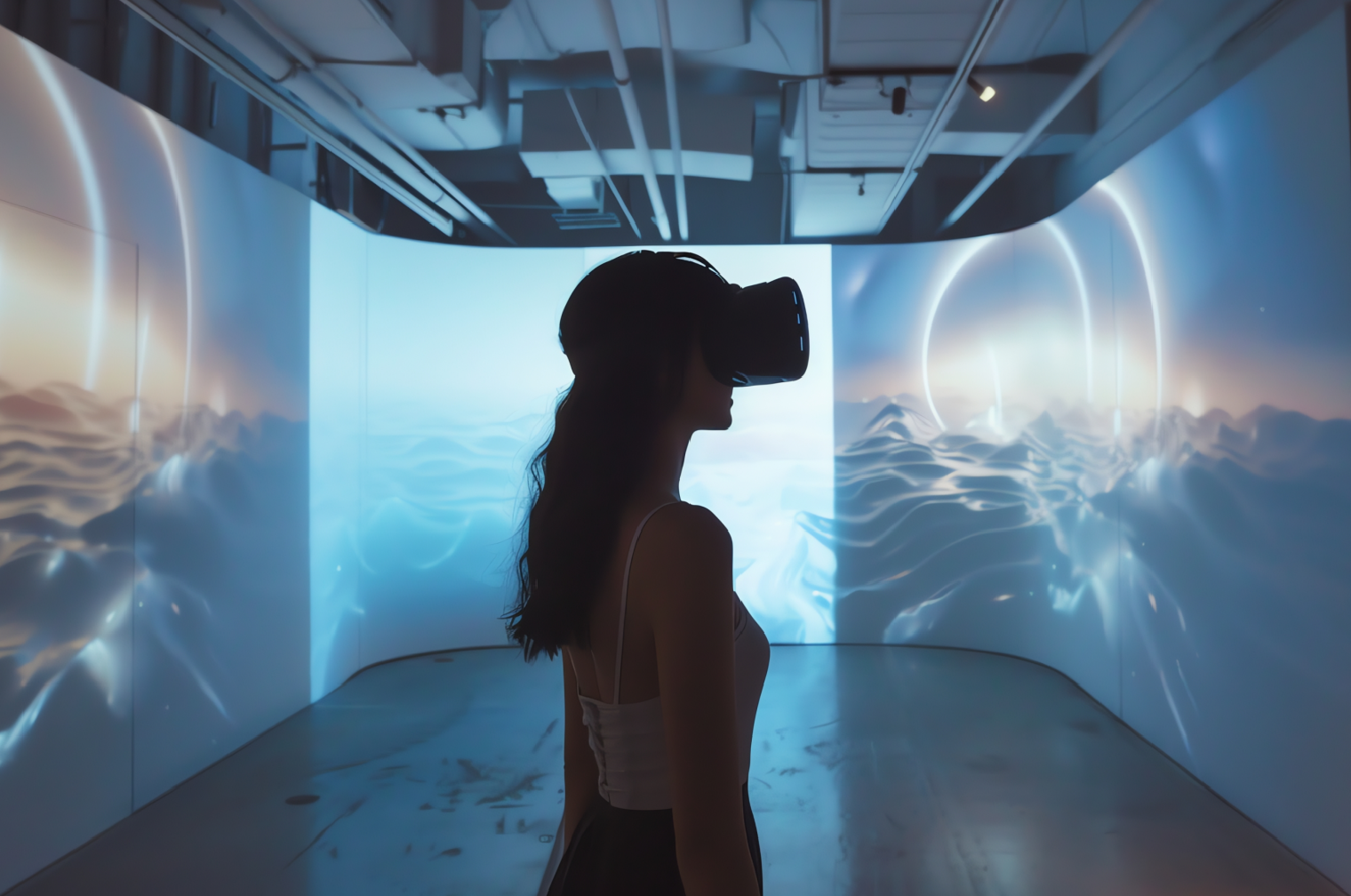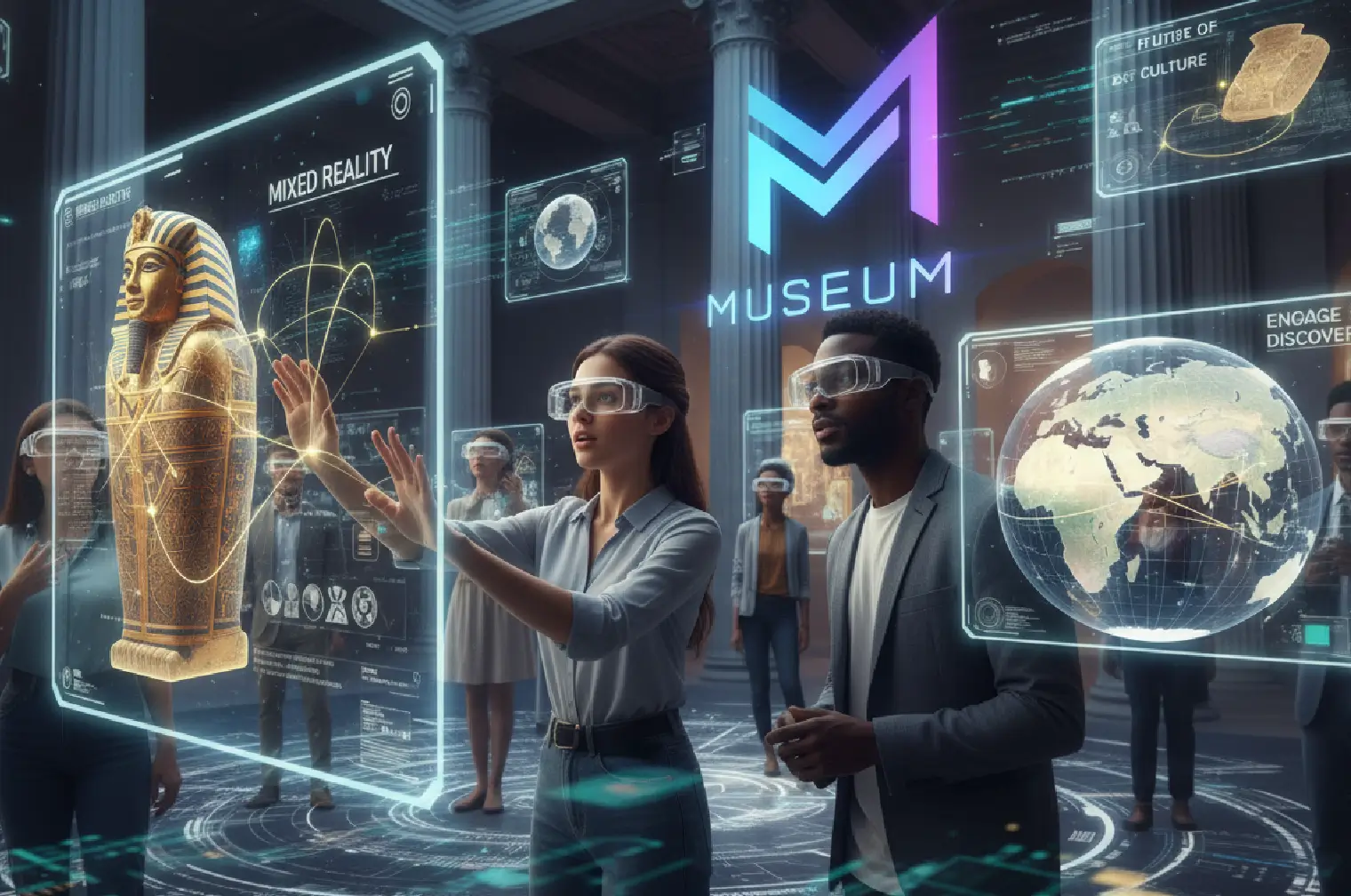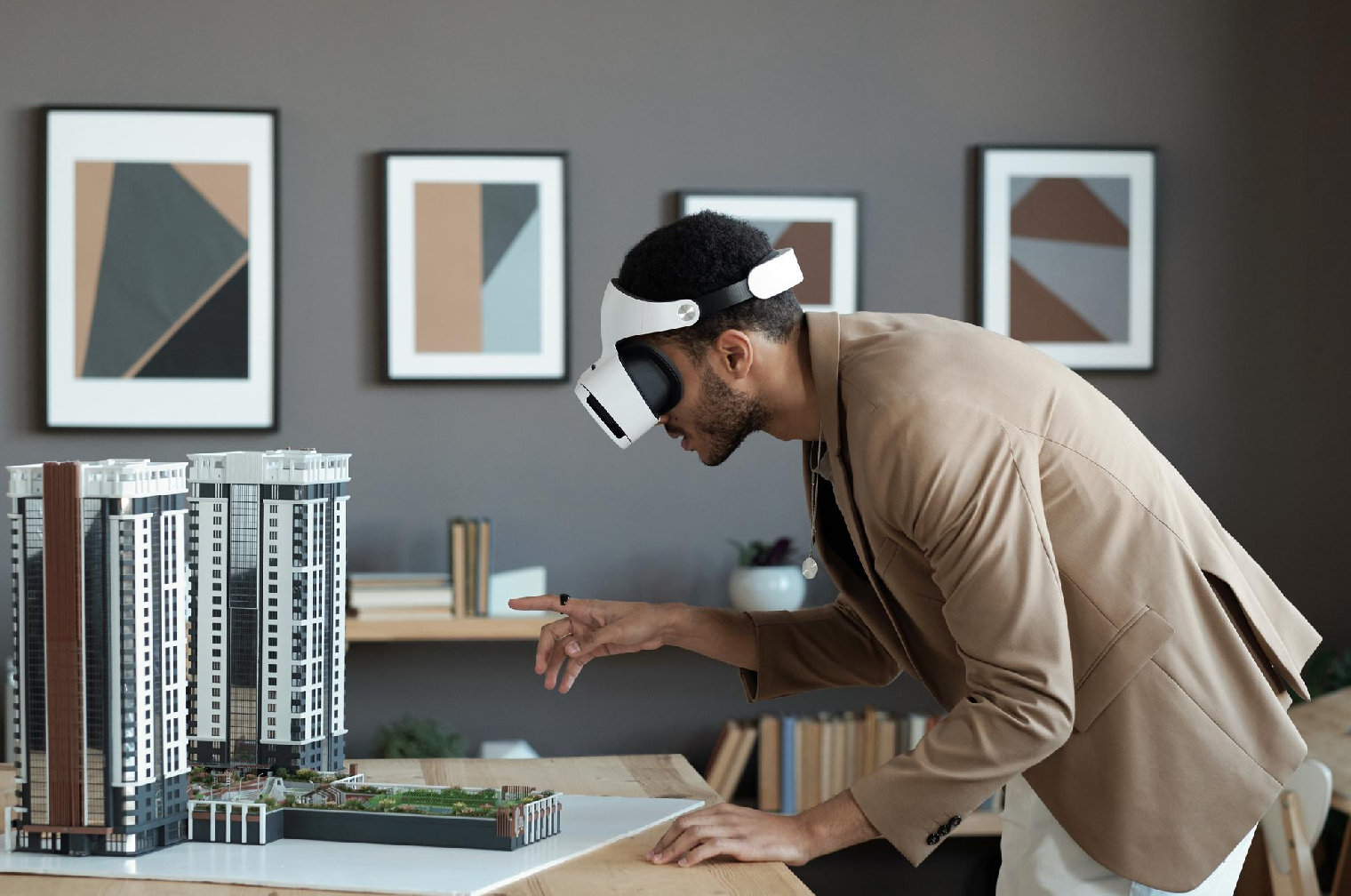Machine Learning and AI for revolution of Tech Companies are changing and streamlining businesses.
Public museums are under pressure to engage digital-native audiences, extend access beyond physical walls, and prove ROI on technology investments. But still, many institutions wrestle with static exhibits, limited interactivity, and integration complexity across legacy IT stacks.
AR/VR experience centers for museums offer a structured path to transform cultural storytelling into immersive journeys while improving accessibility, scalability, and operational efficiency for long-term impact.
This practical guide equips government IT consultants, museum directors, and public-sector innovation teams with a proven blueprint to plan, deploy, and scale immersive museum technology aligned with modernization goals and cultural heritage digitization mandates.
Why AR/VR Experience Centers for Museums are a Public-Sector Imperative
It’s a fact that museums are shifting from static displays to interactive, digital-first environments because immersive experiences demonstrably increase engagement, knowledge retention, and visitor satisfaction. And these are the main outcomes for public value and tourism growth.
Research shows AR overlays and VR presence enhance educational depth and emotional connection to collections, particularly for younger visitors accustomed to interactive media.
Virtual museum tours also remove geographic and mobility barriers, improving access for remote and differently-abled citizens when inclusive design is considered from the start.
Across sustainability agendas, immersive media can reduce overtourism and environmental strain while broadening global reach—supporting cultural preservation and SDG-aligned objectives often embedded in government modernization programs.
Together, these factors make AR/VR experience centers strategically aligned with citizen engagement, tourism, and cultural heritage digitization priorities.
Read: Immersive experiences meet success: a showcase of our immersive solutions projects
Outcomes that Matter: Tie Immersive Museum Technology to Measurable KPIs
- Visitor engagement and dwell time: AR/VR interactivity lifts engagement and encourages deeper exploration of exhibits.
- Learning impact: Presence and authenticity in VR correlate with higher satisfaction and educational outcomes in museum contexts.
- Accessibility and inclusion: Virtual tours expand access for audiences with mobility constraints and diverse needs when supported by accessible UX and audio/visual guidance.
- Tourism and sustainability: Immersive content extends reach, supports responsible tourism, and reduces physical strain on sensitive sites.
- Revenue enablement: Extended reach and differentiated experiences can support premium programming, partnerships, and remote ticketing models.
Each of these outcomes supports government IT modernization, cultural heritage digitization, and citizen experience mandates.
Reimagine Museums with AR/VR Experience Centers
Engage visitors with immersive storytelling and next-gen digital experience centers designed for museums.
Step 1: Discovery: Establish Policy, Audience, and Collections Fit
Begin with a structured discovery that aligns AR/VR scope to cultural mission, audience segments, and policy standards for accessibility, data protection, and sustainability. Map priority collections and narratives where AR can enrich interpretation with context layers, and where VR can recreate environments or time periods inaccessible to the public.
- Define personas: school groups, Gen Z visitors, researchers, differently-abled audiences, and remote cultural tourists.
- Identify content candidates: artifacts with rich provenance, fragile items, reconstructions of lost architecture or events.
- Align with modernization: ensure the program supports digital public services, tourism strategies, and preservation benchmarks.
Outcome: a policy-aligned, audience-centered roadmap for immersive experiences with clear educational objectives and accessibility goals.
Step 2: Experience Strategy: Choose the Right AR/VR Modalities
Select modalities that match the story and the setting, not just the technology.
- AR on-site: overlay interpretive media, translations, or reconstructions on physical artifacts using mobile or glasses; ideal for layered storytelling and spatial learning.
- VR theaters/kiosks: transport visitors to reconstructed heritage environments or behind-the-scenes collections for high-impact education.
- Virtual museum tours: web-accessible, inclusive experiences that extend reach to remote and mobility-impaired audiences when designed with accessible guidance and multimodal aids.
Evidence supports that well-designed AR elevates satisfaction through perceived intertemporal connectedness, while VR presence drives engagement and learning—choose deliberately based on pedagogical goals.
Check ViitorCloud’s immersive education experience: https://www.instagram.com/reel/DEXbAK2BpTb/
Step 3: Technical Architecture: Integrate with Existing IT Systems
Government and museum IT ecosystems require interoperable design—avoid lock-in and ensure maintainability.
Core architectural considerations:
- Content pipeline: photogrammetry and 3D scanning for assets; CMS for narrative layers; version control for curatorial updates.
- Interoperability: APIs to collections databases and digital asset management; standards-based metadata for search and preservation.
- Delivery: on-site Wi‑Fi/5G for AR streaming; edge caching for high-traffic galleries; kiosks with offline modes for resilience.
- Security and privacy: compliant telemetry, consent management, and role-based access for staff tooling—aligned to public-sector norms.
- Accessibility: audio descriptions, subtitles, sign language options, and guided onboarding for virtual interfaces per inclusive design guidance.
Design for modularity: start with pilot galleries and scale to campus-wide AR/VR through reusable components and content frameworks.
Step 4: Content Design: Pedagogy, Play, and Presence
Immersive success hinges on content. Combine evidence-based interpretation with interaction mechanics that encourage exploration.
- Narrative design: multi-path stories for different age groups and languages; optional depth layers to satisfy both casual visitors and researchers.
- Gamified learning: missions, challenges, or rewards increase participation and make complex topics approachable when executed with curatorial oversight.
- Presence cues: spatial audio, realistic scale, and haptics (where applicable) to deepen memory and meaning in VR experiences.
- Inclusive UX: clear onboarding, readable UI, audio descriptions, and multimodal prompts to support diverse abilities and familiarity levels.
Research links personalization and depth of content with higher engagement and knowledge acquisition—build configurable pathways and adaptive guidance into the experience design.
Build AR/VR Experience Centers for Museums
Transform cultural spaces with interactive, future-ready AR/VR solutions tailored for government initiatives.
Step 5: Accessibility and Inclusive Design by Default
Virtual museum tours and on-site immersive stations should integrate inclusive features from day one—this is a policy and ethics requirement for public institutions.
- Provide teaching guidance and clear cues for first-time users; support keyboard/mouse alternatives and readable interfaces.
- Offer audio description, captions, and sign language options; consider tactile and multisensory add-ons for select exhibits.
- Ensure remote participation via web-based virtual tours with device-agnostic performance, enabling at-home learning and outreach to underserved regions.
These practices expand cultural access and align with public-sector inclusion commitments.
Step 6: Procurement and Vendor Readiness
To de-risk public procurement, standardize requirements around technical, curatorial, and operational needs.
- Standards compliance: accessibility, data privacy, content formats, and API documentation.
- Maintainability: clear versioning, content authoring tools for curators, and modular integrations that survive vendor churn.
- Training and change management: staff enablement for operations, content updates, and visitor assistance workflows.
- Evaluation plan: baseline and post-launch measurement for engagement, learning outcomes, accessibility usage, and system reliability.
Evidence-based RFPs referencing engagement, learning, and inclusion outcomes help ensure market responses meet public value criteria.
Step 7: Pilot, Measure, and Iterate
Run a contained pilot in one gallery or collection theme to validate hypotheses and shape scaling decisions.
- Metrics: session counts, dwell time, revisit behavior, comprehension checks, accessibility feature adoption, satisfaction ratings.
- Qual-quant blend: combine analytics with visitor interviews and observational studies to understand behavior and barriers.
- Iterate content and UX: reduce friction, tune difficulty, and adjust narrative layers to better serve intended personas.
Research shows personalization and accessibility options correlate with improved engagement and learning; use pilots to calibrate these variables for diverse audiences.
Step 8: Scale with a Sustainable Operating Model
Long-term success requires governance, cost control, and continuous content renewal.
- Governance: cross-functional steering with IT, curators, education, accessibility, and visitor services.
- Content lifecycle: plan annual refreshes tied to exhibitions and school curricula; prioritize reusable 3D assets and portable narratives.
- Cost model: combine public funding, grants, partnerships, and premium programming; leverage virtual tours to extend reach without physical strain.
- Sustainability: align with responsible tourism goals by offering rich offsite experiences to mitigate overtourism and protect fragile sites.
This approach ties immersive investments to policy outcomes across culture, education, and sustainability agendas.
Design Future-Ready AR/VR Experience Centers
Deliver interactive exhibits and seamless visitor engagement with our AR/VR expertise for museums.
Budgeting and ROI: Framing the Value for Public Stakeholders
Decision-makers need clarity on investment versus outcomes. Use a balanced scorecard that connects spend to measurable public value.
- Engagement ROI: higher dwell time and repeat visits driven by immersive narratives and presence effects in VR/AR.
- Access ROI: expanded reach to remote and mobility-impaired citizens through virtual museum tours and inclusive features.
- Tourism ROI: broader audiences and sustainable visitation pathways aligned with heritage protection and city branding.
- Operational ROI: reusable content, centralized asset pipelines, and modular integrations reduce the long-term cost of change.
A pilot-to-scale path with transparent metrics and inclusive design helps justify and sustain funding.
Technology Stack Snapshot: What Works in the Museum Context
- AR layer: device-agnostic mobile AR or headset support; image/marker and spatial anchors for stable overlays.
- VR stations: tethered or standalone kiosks with curated scenes; presence-enhancing audio and interaction models.
- Virtual museum tours: browser-based interactive walkthroughs with structured metadata, education modules, and assistive options.
- Data and content ops: 3D scanning/photogrammetry, DAM/CMS integration, and API bridges to collections databases.
These components enable a coherent, maintainable platform rather than one-off demos.
Also Read: Interactive LED Screen App for MAP Museum Exhibits
How ViitorCloud Partners with Government IT to Deliver AR/VR Experience Centers
ViitorCloud collaborates with government IT consultants, cultural departments, and system integrators to deliver end-to-end AR/VR Experience Centers for Museums—grounded in accessibility, interoperability, and measurable outcomes.
What this engagement includes:
- Strategy and discovery: policy alignment, audience modeling, curatorial fit, and accessibility planning informed by museum research.
- Content and experience design: AR overlays, VR reconstructions, and virtual tours built for learning, presence, and inclusion.
- Systems integration: standards-based APIs to collect data, CMS/DAM orchestration, secure analytics, and maintainable content pipelines.
- Pilot-to-scale program: iterative pilots with research-backed KPIs, staff training, and governance models for sustainable operations.
This approach de-risks modernization, accelerates time-to-value, and ensures AR/VR Experience Centers for Museums are built to last—technically, culturally, and financially.
You can check our work at https://viitorcloud.com/case-studies
Scale Impact with AR/VR Experience Centers for Museums
Empower communities and enhance learning by creating immersive AR/VR environments for cultural institutions.
Talk to ViitorCloud
Partner with ViitorCloud to plan, deploy, and scale AR/VR Experience Centres for Museums that meet public mandates for access, learning, and sustainability without compromising on curatorial rigour or IT integrity.
Our digital experience team brings deep experience in immersive museum technology, virtual museum tours, and government IT modernization to deliver projects that are measurable, inclusive, and future-ready.









